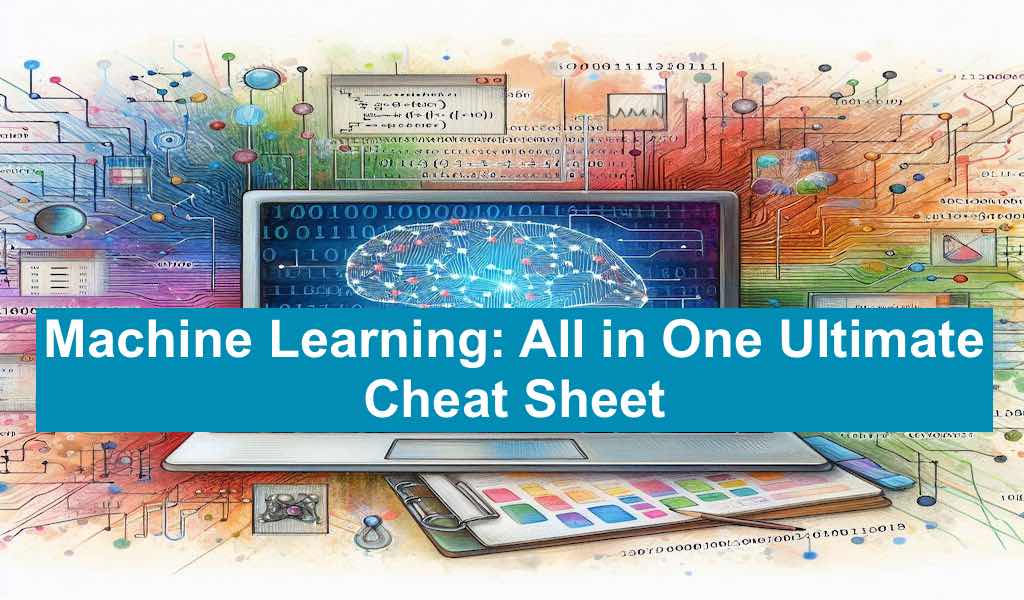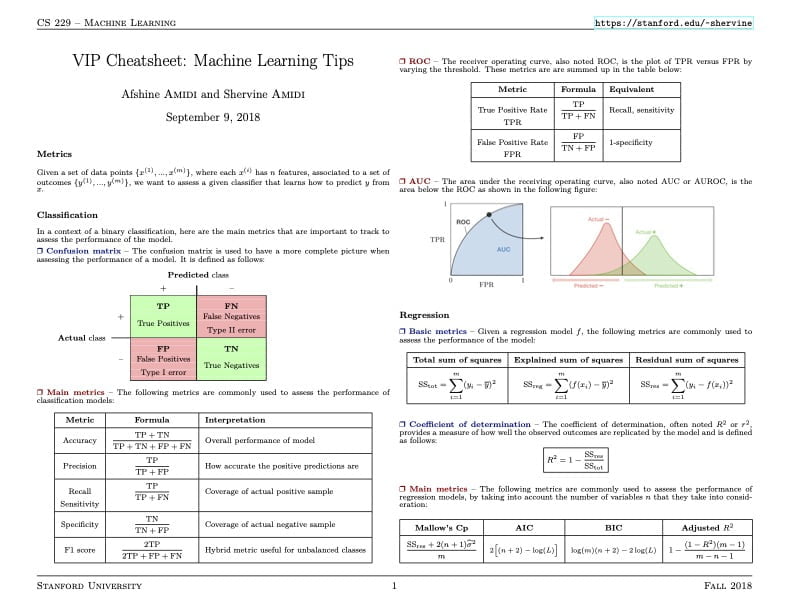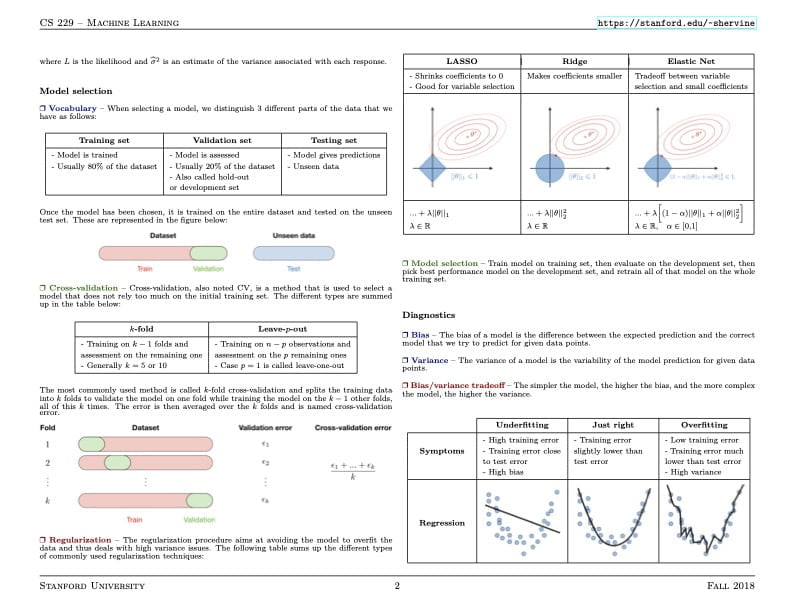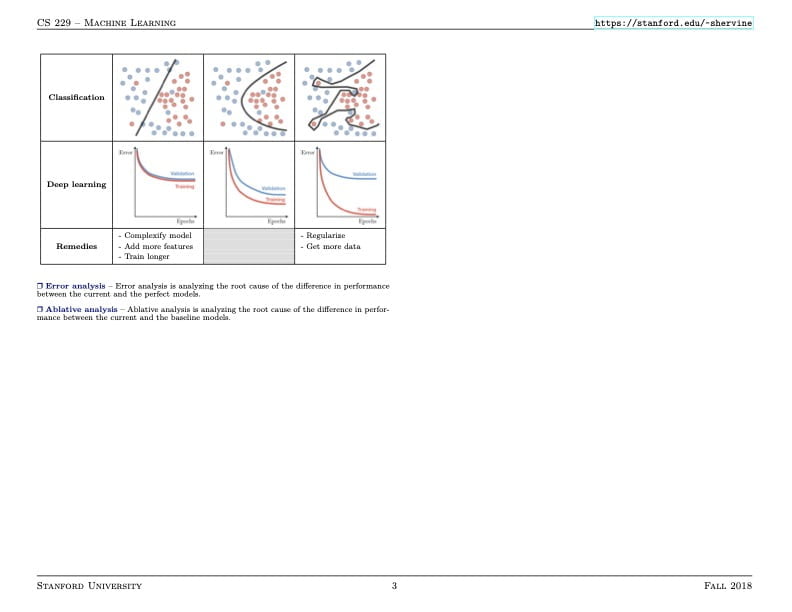
This cheat sheet provides a brief summary of the concepts, model selection, regularization, cross-validation, and metrics used in machine learning techniques. This post also serves as a concise refresher and ultimate cheat sheet, covering the essential aspects of machine learning. Let’s dive in!
Table of Contents
- Introduction
- What is Machine Learning?
- Learning Without Explicit Programming
- Types of Machine Learning
- Machine Learning: Essential Terms and Aspects
- Data-Driven Technology
- Detecting Patterns
- Applications
- Difference Between AI and ML
- Machine Learning: Cheat Sheet
- Summary
- Learn more about machine learning and other topics
Introduction
In today’s data-driven world, machine learning has become an indispensable tool for extracting insights, making predictions, and automating complex tasks. Whether you’re a seasoned practitioner or a newcomer to the field, it’s essential to have a solid understanding of the fundamental concepts and techniques that underpin this powerful discipline.
What is Machine Learning?
Machine Learning (ML) is a subfield of artificial intelligence (AI) that focuses on developing systems capable of learning from data without being explicitly programmed. Here are some key points:
Learning Without Explicit Programming
- In traditional programming, developers write precise instructions for a computer to follow to perform any task.
- In machine learning, we provide the computer with data and let it learn patterns and relationships on its own.
- The goal is to create models that can make predictions, classify data, or perform other tasks based on what they’ve learned from examples.
Types of Machine Learning
Supervised Learning
Models learn from labeled data (input features and corresponding output labels). Examples include predicting house prices or classifying emails as spam or not.
- Classification: Predicting a categorical output (e.g., spam or not spam)
- Regression: Predicting a continuous output (e.g., house prices)
- Algorithms: Logistic Regression, Decision Trees, Random Forests, Support Vector Machines, Neural Networks
Unsupervised Learning
Models work with unlabeled data, discovering hidden patterns and grouping similar data points. Clustering and dimensionality reduction are common tasks.
- Clustering: Grouping similar instances together (e.g., customer segmentation)
- Algorithms: K-Means, Hierarchical Clustering, DBSCAN
Reinforcement Learning
Agents learn by interacting with an environment, receiving rewards or penalties based on their actions. Used in game playing and robotics.
- Agent-environment interaction: An agent learns through trial-and-error by interacting with an environment
- Applications: Game AI, robotics, recommendations
Machine Learning: Essential Terms and Aspects
1. Model Evaluation
- Accuracy: Proportion of correct predictions
- Precision: Proportion of true positives among positive predictions
- Recall: Proportion of true positives identified
- F1-score: Harmonic mean of precision and recall
- Cross-validation: Splitting data into training and validation sets
2. Feature Engineering
- Feature selection: Choosing relevant features
- Dimensionality reduction: Reducing the number of features (e.g., PCA, t-SNE)
- Feature extraction: Deriving new features from existing ones
3. Model Optimization
- Hyperparameter tuning: Finding the best hyperparameters (e.g., learning rate, regularization)
- Gradient descent: Iterative optimization algorithm
- Regularization: Preventing overfitting (e.g., L1, L2)
4. Neural Networks
- Feedforward networks: Data flows in one direction
- Convolutional networks: Effective for image data
- Recurrent networks: Suitable for sequential data (e.g., text, speech)
5. Ensemble Methods
- Bagging: Building multiple models on different subsets of data (e.g., Random Forests)
- Boosting: Sequentially building models to learn from previous errors (e.g., Gradient Boosting)
- Stacking: Combining predictions from multiple models
6. Ethical Considerations
- Bias and fairness: Ensuring models are not discriminatory
- Privacy and security: Protecting sensitive data and model integrity
- Transparency and interpretability: Understanding model decisions
7. Deployment and Monitoring
- Model serving: Deploying models for real-time predictions
- Model monitoring: Tracking model performance and retraining when necessary
Data-Driven Technology
- ML is data-driven. Organizations generate vast amounts of data daily.
- By identifying relationships in this data, organizations can make better decisions.
- ML models automatically improve themselves over time by learning from past data.
Detecting Patterns
- Machine learning algorithms detect patterns in data.
- For large organizations, branding becomes easier when targeting a relatable customer base.
- It resembles data mining but focuses on handling extensive datasets.
Applications
- Machine learning is actively used in various domains:
- Natural Language Processing (NLP): Involves comprehending and producing human language.
- Computer Vision: Image recognition, object detection, and facial recognition.
- Recommendation Systems: Personalized recommendations (e.g., Video on Netflix, products in Amazon).
- Healthcare: Diagnosing diseases, predicting patient outcomes.
- Finance: Fraud detection, stock market prediction.
- Autonomous Vehicles: Self-driving cars use ML for decision-making.
Difference Between AI and ML
- Machine Learning is the part of AI, hence we can say all ML are AI, but not all AI are to be considered as ML.
- AI includes a broader range of systems or machines that resemble human intelligence.
- Machine learning (ML) is a subset of artificial intelligence (AI) that automatically enables a machine or system to learn and improve from experience by analyzing data.
Machine Learning: Cheat Sheet



Summary
In summary, ML empowers computers to learn from examples, adapt, and make informed decisions—a powerful tool shaping our digital world!
This cheat sheet covers the essential concepts and techniques in machine learning, serving as a handy reference for practitioners and learners alike. Remember, mastering machine learning requires continuous practice, experimentation, and staying up-to-date with the latest advancements in the field.
Learn more about machine learning and other topics
- Supervised Learning Cheat Sheet
- Unsupervised Learning Cheat Sheet
- Machine Learning Algorithms: How To Evaluate The Pros & Cons
- Data Science Cheat Sheets
- Probability and Statistics
- Deep Learning Cheat Sheets
- Unsupervised Learning by Google
